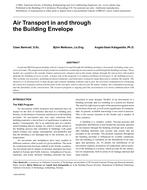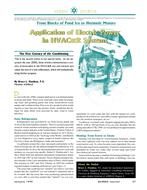In this work we discuss the optical behavior of transparent materials, such as colored and colorless glass, as well as the sputtered and pyrolitic reflective glass types, used in building facades. The optical evaluation of these materials is carried out in different solar spectrum intervals: ultraviolet, visible-light, and near infrared, and the obtained data are related to thermal and visual comfort. This approach leads to the identification of the ideal glass for warm climates, as in Brazil, which should transmit visible light but not near infrared radiation. Spectrophotometric analysis of the transmitted radiation is performed for different incidence angles, varying from 0º to 80º, and by scanning the solar spectrum, from 300 nm to 2000 nm. At the value of 60º of the incidence angle, the transmission of the solar spectrum is significantly attenuated. These results are important for applications in architecture because data commonly found in the literature are usually related to normal incidence, which very rarely occurs in real situations. The results of this work complement available technical information, allowing a more adequate analysis of the use of the tested glasses.
Authors: Rosana M.Caram, Ph.D.; Joaquim Pizzutti; Lucila C. Labaki, Ph.D.; Eduvaldo P. Sichieri, Ph.D.
Citation: Thermal Performance of the Exterior Envelopes of Buildings VIII
Keywords: December, Florida, 2001
Citation: Thermal Performance of the Exterior Envelopes of Whole Buildings VIII
Product Details
- Published:
- 2001
- File Size:
- 1 file , 230 KB
- Product Code(s):
- D-7981


